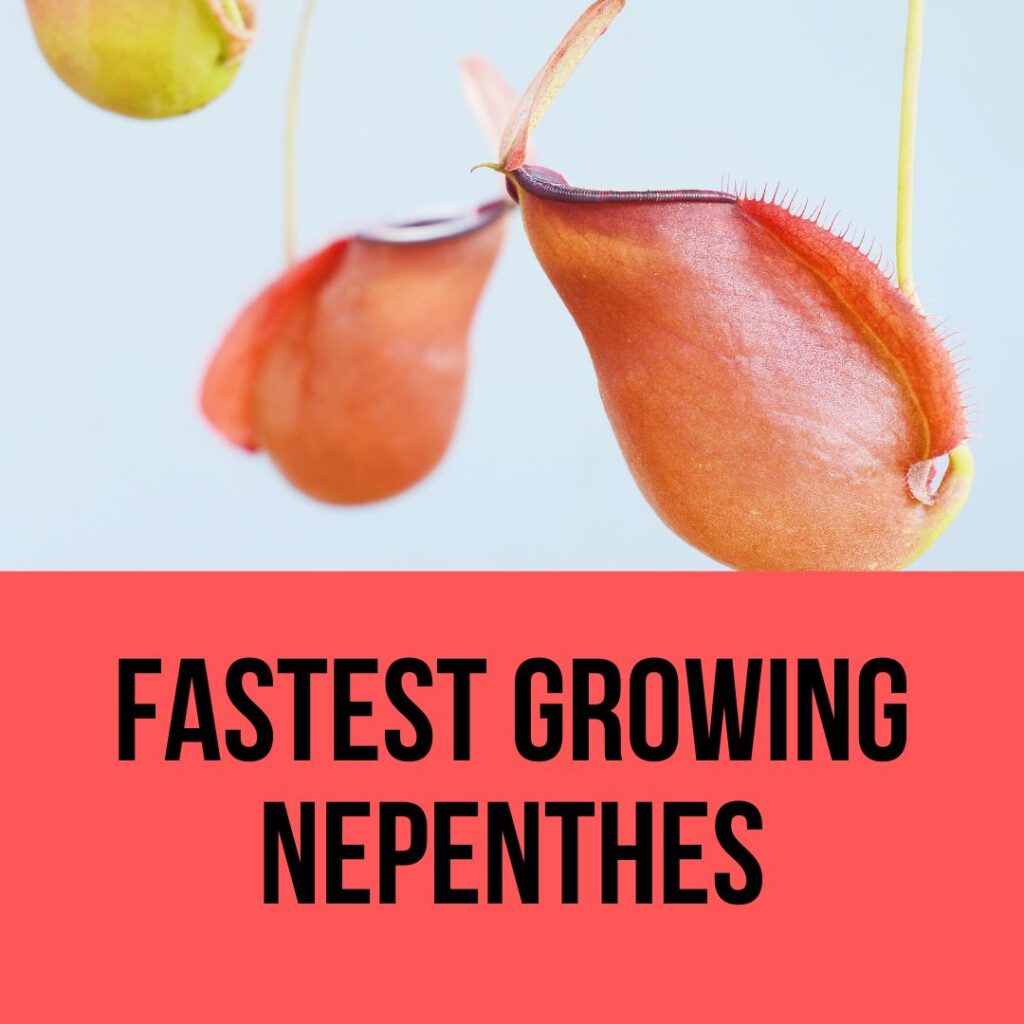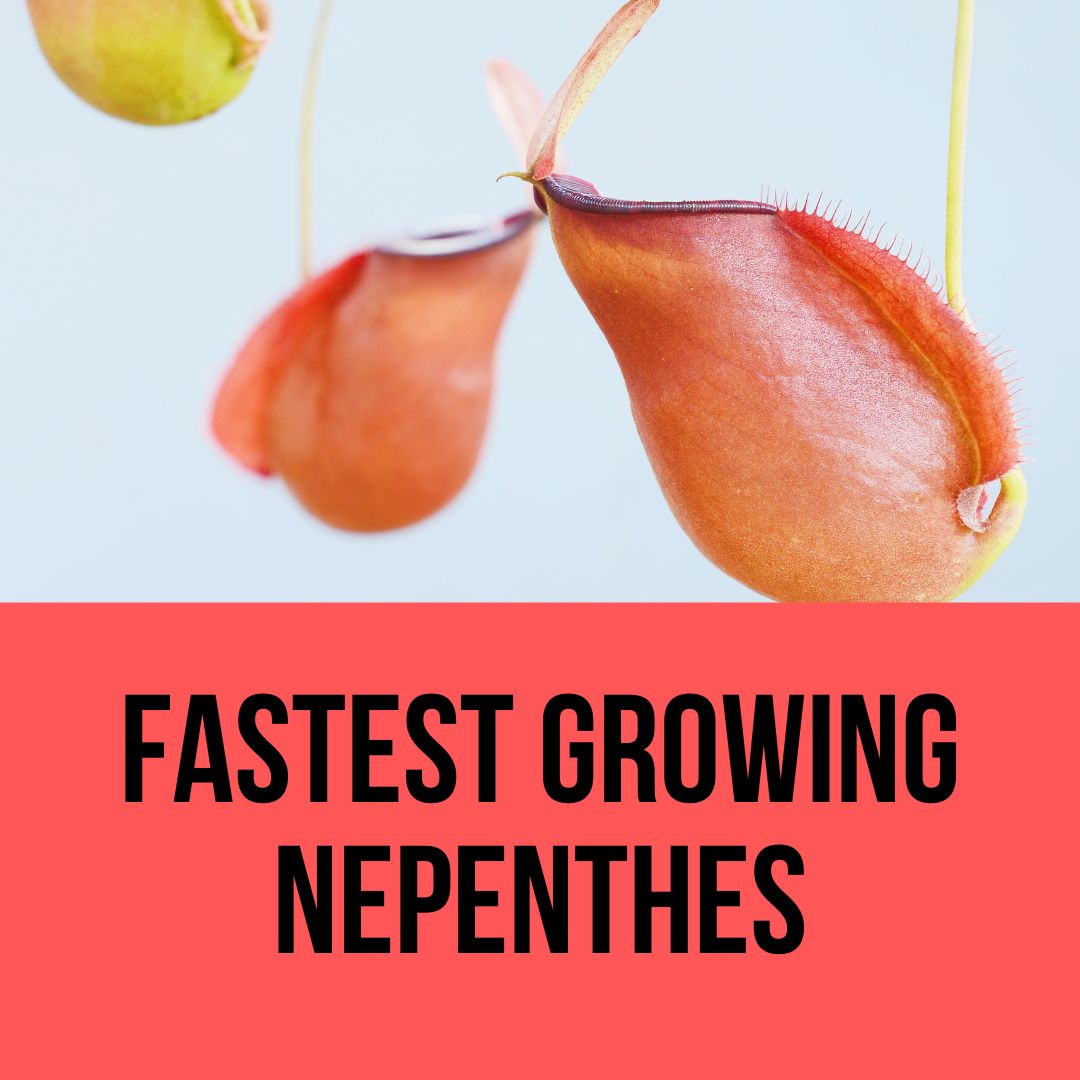There is a wide variety of environments in which nepenthes may be found. They may be found in warm, humid rainforests as well as chilly, windy ridge tops. Beaches are another common habitat for them. Sand, acidic peat bogs, and alkaline volcanic soils each support the development of unique plant and animal species. While some species thrive in the blazing heat of the sun, others prefer the cool protection of the forest canopy.
Nepenthes enthusiasts most often ask about the fastest growing Nepenthes’. Also, they want to know how to grow Nepenthes in the fastest way. This article will help you find your answers. Hold on till you reach the parting line of this article!
A brief overview of some Nepenthes Origins
There are approximately 100 species of Nepenthes, and they come from a wide variety of environments. Additionally, there are several cultivars and hybrids of Nepenthes, which provide an even greater level of variation. If you have a window in your home that receives some direct sunlight, Nepenthes species and hybrids with waxy, thick leaves are excellent choices for houseplants. Complex hybrids that were chosen for their rapid growth, such as N. x Superba and N. x Mixta, are the ones that are the simplest to cultivate.

Which are the fastest growing Nepenthes?
Among all the Nepenthes species, Bicalcarata is the one that grows the fastest. Its growth rate is 55% faster than all other Nepenthes species while Ampullaria is 18% faster in the clan. After these two species, the two fastest growing Nepenthes is Mirabilis and Gracilis.
So now you know, which Nepenthes you should go for if you want to grow it faster!
Growing your own Nepenthes
Growing your own from seed is a lot of fun, but you need to keep in mind that it may take anywhere from three to five years to acquire a plant from seed that is mature enough to show.
Starting a Nepenthes plant from seed may be a very difficult endeavor. It is advised that novices begin their journey with Nepenthes by growing plants from stem cuttings or cheap tissue culture plants until they have some familiarity with the plant. If you can maintain your Nepenthes plants alive and healthy for a few years, you may want to consider starting new plants from seed at that point.
Habitation for the fastest growth of Nepenthes
The nepenthes plant produces seeds that are transitory and susceptible to cold temperatures. As soon as you obtain the seeds, you should plant them right away. If you have any seeds left over, you should send them to the Seed Bank as soon as possible, unless there is a possibility that they may get frozen on the way there. The Seed Bank reports that around one-half of the Nepenthes seeds it receives is already dead upon arrival.
Sometimes it is because they were probably frozen during the route—it appears many seeds become accessible in late autumn and early winter. The common issue is they were mailed after lingering around too long. Before submitting the seeds to the Seed Bank, do not test whether or not they have germinated. They may sprout for you, but they would have died off by the time they reached the members. Because of this and the previous point, the Seed Bank does not test whether or not the seeds will germinate.
On finely chopped, living sphagnum moss that has been kept in circumstances that are extremely moist but not wet, nepenthes seeds may be started. If the sphagnum begins to outcompete the seeds for space, pinch it back with a pair of forceps. If you use dried long-fibered sphagnum instead, you may rehydrate it with boiling water to minimize pollutants slightly. If you boil it for too long, the moss will begin to decompose, and it will become quite moldy when it ultimately becomes contaminated.

Coir, which is also known as coco peat, is an additional alternative that seems to be very effective. Make sure that the brand you choose specifies on the label that the coir has been “exposed to rain water from at least three monsoon seasons.” Coir which has between fifty and seventy-five percent long fibers is my favorite kind. I have my doubts if it is still for sale at this time. Combining the coir with washed perlite is another approach that may be used.
Taking Care of Nepenthes Seedlings
The seeds should be scattered over the top of the medium, and then the pots should be placed in plastic bags and placed in a warm environment with temperatures between 26 and 32 degrees Celsius (80 and 90 degrees Fahrenheit). Plastic bags will maintain a high level of humidity while preventing the growth of fungus gnats, mold spores, and moss spores.
The planters need to be placed in somewhat shaded areas or underneath fluorescent lighting. It might take anything from four weeks to nearly an entire year for seeds to germinate. The viability of the seedlings and the percentage of seeds that germinate increase in direct proportion to the age of the seed.
Repotting of Nepenthes
Mold may be an issue, so be sure to monitor the seeds often. Mold will not be an issue for you in the vast majority of cases provided that the seeds are viable, that they have been properly kept, and that the medium that you employ is inert. In the event that you find mold, mist the seeds with distilled water. To promote the process of germination, it is generally a good idea to do this anyway.
The seedlings may be kept in their original containers, covered with plastic bags, and placed in a nicely lit area for up to two years. If the soil surface becomes contaminated with cyanobacteria or moss, or if the little plants are growing too closely together, you will need to gently transplant them to fresh media, in new pots, and in new plastic bags, and then place them back under the lights. After about two years, the seedlings are ready to be transplanted into new containers, given room between them, and placed in a terrarium or greenhouse.
It may take an eternity, but after three to five years of care, you’ll have all the Nepenthes you can handle.
Hopefully, this article answers all your questions and comes in for your help. Thanks for stopping by! Happy gardening!
